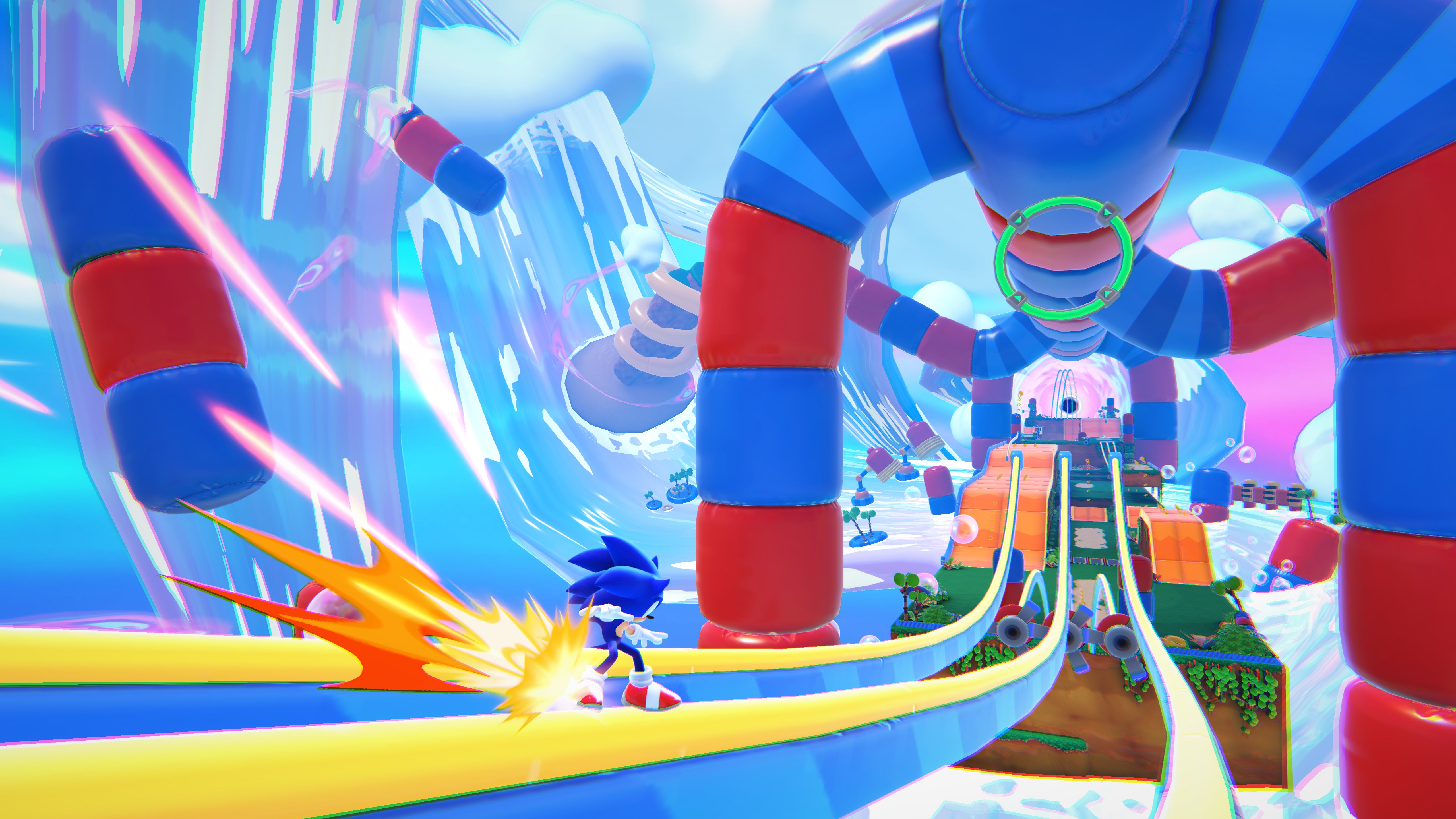
A buzz has surrounded Sonic Dream Team both before and after its launch, for better and for worse. One major frustration from fans comes from the game’s Apple Arcade exclusivity, effectively blocking a huge swathe of the fandom’s audience from being able to play it.
It's doubly aggravating considering the Sonic series’ tendency to launch games on multiple platforms, as has been the case since the days of the PlayStation 2, Gamecube, and original Xbox. But that’s only one of two reasons why this exclusivity sucks. The other is much simpler: Sonic Dream Team is brilliant.
While somewhat limited thanks to being built for mobile (hampered by occasional frame rate dips and an inability to customize controls), Sonic Dream Team still presents a compelling blend of what’s worked in Sonic games of the past. Not only that, but I believe it’s also pointing to the direction Sega wants to take the series in the future.
Learning from the past

If you’ve been a Sonic fan as long as I have, you’ll almost certainly notice elements of Sonic Dream Team’s design that have been plucked right out of the series’ past. But only the best bits, mind; there’s no camera awkwardness to worry about, nor are there any glaring bugs, glitches, or flaws beyond the occasionally shoddy framerate when played on an Apple TV 4K device.
Instead, Sonic Dream Team pulls elements from many of the best Sonic games, reminding me why they are so beloved in the first place. There’s the fast but manageable speed of titles like Sonic Unleashed and Sonic Generations. Multiple playable characters are present with different abilities a la the Sonic Adventure games. I also noticed a surprising amount of verticality in the level design, which strongly reminded me of Sonic Heroes. Toss in hallmarks like grind rails, springs, and abilities like the homing attack and lightspeed dash, and you’ve got an experience here that’s both familiar and fresh.
The dreamlike worlds you’ll explore in Sonic Dream Team universally use vibrant palettes reminiscent of Sonic Colors and the classic 2D outings.
Sonic Dream Team’s levels are of a decent length, too. Granted, they’re not as long and packed with set pieces as we’ve come to expect from the series’ 3D outings. But they’re certainly not as insultingly short as the ones found in Sonic Forces. They flow effortlessly, too, with collectible red coins sprinkled along the critical path and a set of blue ones hidden in various nooks and crannies. This makes Sonic Dream Team’s levels excellent for speedrunning and exploration, granting a welcome amount of replay value.
Then there’s the setting. The dreamlike worlds you’ll explore in Sonic Dream Team universally use vibrant palettes reminiscent of Sonic Colors and the classic 2D outings. There’s impressive variety here, too, avoiding any overuse of cookie-cutter locales you’ll find in many platformers. The game’s first world mixes a coastal setting with enormous funhouse-type buildings and obstacles, for example. It’s certainly a far cry from the strikingly bleak and isolated atmosphere that was put forward (effectively, mind you) in Sonic Frontiers.
Sign up for breaking news, reviews, opinion, top tech deals, and more.
Apples and oranges

With Sonic Dream Team, developer Sega Hardlight has shown it’s able to make mobile-first games of console quality. So why is it locked down on the Apple Arcade subscription service? It’s possible that Apple could’ve funded the game to a degree, in which case the exclusivity would be understandable. Still frustrating, but that is how these things sometimes work.
But it doesn’t stop me from wanting Sonic Dream Team to fly the Apple Arcade roost. An Android version would be very welcome as a first step to making the game vastly more accessible. Naturally, though, I’m really holding out hope for a console release. Sonic Dream Team would feel right at home on Nintendo Switch OLED, for example; that gorgeously sharp and vivid screen would do the game’s visuals such justice.
I won’t hold my breath, though, as it’s not the first time a Sega Hardlight title has been locked to iOS devices. Both Sonic Racing (based on 2019’s Team Sonic Racing) and Sonic Dash Plus can also only be found on Apple Arcade, so there is a precedent. Still, Sonic Dream Team is arguably Hardlight’s most ambitious project to date, and I’d love nothing more than for a wider group of players to be able to experience yet another excellent game in the famous hedgehog’s recent run of quality.
Want to learn more about Apple’s gaming subscription service? Be sure to read our guide to the best Apple Arcade games to find out about top titles to play on your iOS devices.

Rhys is TRG's Hardware Editor, and has been part of the TechRadar team for over four years. Particularly passionate about high-quality third-party controllers and headsets, Rhys strives to provide easy-to-read, informative coverage on gaming hardware of all kinds. As for the games themselves, Rhys is especially keen on fighting and racing games, as well as soulslikes and RPGs.